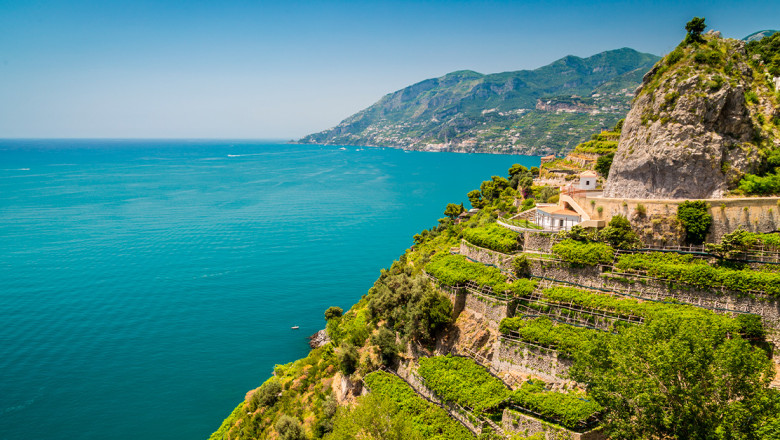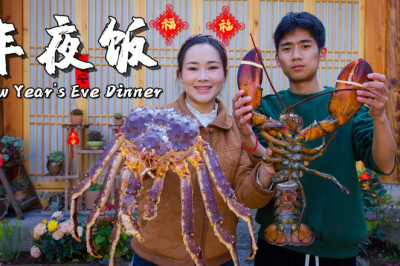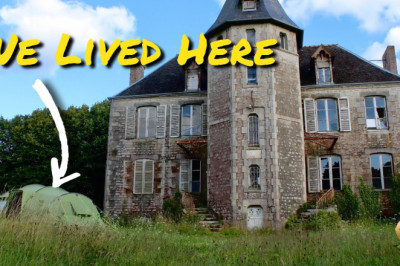
views
Today’s episode features Maze Row Wine Merchant’s esteemed partner, Tornatore, which is produced on Sicily’s Mount Etna. Yes, that Mount Etna, one of the world’s most active volcanoes. In fact, the Tornatore family started growing grapes in Etna in 1865, making them the most established wine growing families there. To try Tornatore wine, follow the link in the episode description to TheBarrelRoom.com, where you’ll find Rosso, Red, and Bianco White wine.
On this episode of “Wine 101,” VinePair’s tastings director Keith Beavers explores Campania and its heavy ties to the ancient world. In the episode, we’ll break down how to understand this amazing wine region on the American market and introduce you to some of your new favorite wines. Tune in for more!
Keith Beavers: My name is Keith Beavers and I recently found out that when you own a cat, you basically own a wild animal. That’s awesome. And they’re adorable.
What’s going on, wine lovers? From the VinePair Podcasting Network. This is “Wine 101.” My name is Keith Beavers. I am the tastings director of VinePair and what is good? We are leaving northern Italy and we are going to Campania where Naples is the capital. Yeah, Naples. If you’ve been to Naples and you’ve had the wine there and you’re a little bit confused, or if you haven’t and you want to know more about it, this is the episode for you. We’re going to get nice with Campania.
Wine lovers, get ready to fall in love. Get ready to fall in love with the names of grapes and wines that you may have never heard of. Was that intense? That was kind of intense, right? Get ready to fall in love, wine lovers. The thing about “Wine 101” is this is an educational podcast, but I cannot deny my love for certain wines and I’m a human. And I mean, obviously, you guys know that I love Italian wine — like I really love Italian wine, and the region of Campania is kind of like the culmination of the wines that I love the most. It is such a wonderful wine region.
And what’s really wild about Campania is that Napoli, or Naples, is the capital of Campania, and that’s where we get pizza from. And nearby is Pompeii, this was the… just north of Naples, this was the Roman Empire’s backyard, their playground, their spa day. It is even like… it’s a wheat factory. So is Sicily. But when we talk about Campania, we don’t, we actually talk about Napoli, which is all just fine. But one thing that’s always mesmerized me is that when I talk about the wines of Campania and when I’m done, when people actually taste these wines and you just see their faces going, “Oh my God, I didn’t know these wines existed. These are so great.”
And I want this episode to be that for you. I want this episode to be the episode about Campania that gets you excited about these varieties and these wines that have been around since antiquity and seek them out. Because the other thing about Campania is the majority of the wines — well, not the majority, the most popular and celebrated wines in Campania are all over our market. They’re just sitting there in the Italian section and sometimes we glaze over them because we can’t pronounce it, we don’t know what it means. But once you understand the generalities of the wines from Campania, you will have a nice plethora of wine to enjoy that you may have never had before, that actually might be your next favorite wine, and a really awesome category of wine to get your friends into. Because these are very awesome, age-worthy, crowd-pleasing wines.
Have I hyped up Campania enough? Let’s get into it. In modern times, we can say that France is the epicenter of wine, right? They created the wine appellation system that was copied all over the world. Their terms, their procedures, and their approach is often carbon copied throughout the planet, and that’s totally awesome. In antiquity, that was Campania. This was a home base for Pliny who was… you’ve probably heard me mention Pliny a few times through these episodes. He was one of the first wine critics from antiquity. This was the place of Pompeii, like I said, and from the Lazio border… So you have Campania, just north of Campania is Lazio and that is the region where the heart of power was, that’s where Rome is.
But just south of Lazio is the northern border of Campania. And if we go from the coast of the northern part of Campania all the way down past Naples, keep on going all the way down to the southern part of Campania, almost that entire coastline has wine regions on it. And human activity in this place was just lunatic, even as it is now in Naples and as we go down that coastline, we find artifacts and we see remnants of wine being made all the way back to Roman times. And through this archeological evidence, through documentation and actual findings of physical things, we’re seeing that there were actual wine regions in Campania and the wines were named after the regions they were made in. It’s almost like – I’m going to say this. It’s going to get me in a lot of trouble but I’m going to say this — it’s almost like saying, “I love wines from Napa Valley” before there was even an AVA called Napa Valley.
These were wines with names like Surrentine, Falernian, Massic, and these were places, or if the wine wasn’t named after a place, it was named something that came up through the local dialect of the area, sort of like the wine Muscadet we talked about in the Muscadet episode where the grape is Melon de Bourgogne, but because of the style of wine that’s made there, they call it Muscadet. But what’s really wonderful about Campania is that you have Napoli and you have this coastal life, the sort of Mediterranean-style climate in life, but as you go east into the hinterland of Campania, you start getting into mountainous regions. There are actually ski resorts in Campania today. And in that mountainous region, other wines became popular.
And I guess the reason I’m saying all this is because I can’t go into a full history of Campanian wine, but what I can do is say that the varieties that I’m talking about that were making these famous wines in antiquity are generally thought to be the grapes making wine in Campania today, like a full connection from ancient world to modern times. The thing about these grapes in Campania is they’re so old. Some of them are so old, DNA profiling cannot find the parentage of them. So what Italians have done in the south is often give them Greek names in honor of where they believe the grapes came from: Greece. Pretty awesome. And because of all this history in Campania, the region itself has — well, with wine appellations, everything changes all the time. Right now, I believe it’s up to like 20, maybe 19 or 20 different wine appellations, including DOC and DOCG and IGP. For a lot of details on appellations, check out the appellations episode from “Wine 101.”
So to get you into this region, I’m not going to go through every DOC and DOCG, I just want to let you know that these wine appellations in Campania are not only tied to the history of wine in Campania but their names are tied to the history of wine. For example, we’ll have, and this is not an easy one to say, Campi Flegrei. I might not be doing that right, but what it means is “the field of fire.” That’s such a cool name, and all it means is that this is a place where these natural spas were where the Romans would hang out. And this is a great place for a wine or a grape called Falanghina, which I’m going to talk about in a second. There’s a DOC called Vesuvio, which is named after Vesuvio, which is another volcanic mountain in the area known for its wine since antiquity.
I feel the best way to introduce Campania to somebody who doesn’t know it yet or is not as familiar as they want to be with it, is to start with the varieties. Because of all of the appellations in the region, we focus on the varieties, and then I’ll tell you where they are, because the thing is, when you go to wine shops and look for Campanian wine, for white wine, you’re mostly going to see the actual name of the variety. For red wine, it’ll be a little bit different and we’ll get into that. But what’s really unique about Campania actually is that it’s primarily a white wine region, which is kind of crazy considering it’s in the southern part of Italy. And that’s because from the coast of Napoli, let’s say, all the way inland to before we get into this mountainous region, it’s mostly called alluvial plains. Alluvial is a word used for the fanning of material from mountains and hills that fan out into a valley after they fall down that hill. It’s called an alluvial fan, if you will.
This is the Mediterranean climate that you would think about when you’re in southern Italy. But the thing about Campania is it has this mountain region and that mountainous region, because of its elevation, can actually mitigate the temperatures of the alluvial plains towards the coast. So because of this particular microclimate, or I should say macroclimate, white wines thrive here, and the majority of the white wines thrive in the mountainous region. There are three Campanian white wines you’re going to see on the American market made from three native grapes. So let’s go through them. The first one is called Falanghina — you’ll check the transcript for the spelling — but Falanghina is absolutely crisp, clean, high- toned, lemony, very aromatic, and sometimes floral white wine. It reminds me sometimes of the grape Assyrtiko in Santorini of Greece. It’s very crisp, very clean, but has a lot of awesome aromas that kind of complement the minerality of the white wine.
And you’re going to find these all over the market. There are two particular places you’re going to find them from. One is called Sannio DOC and that is an area that is in the mountainous region of the hinterland of Campania. And you’re also going to see Falerno del Massico. Falerno del Massico is in a very hilly region all the way towards the coast, just south of the Lazio border in northern Campania, and this is where they believe that the famous and ancient wine, Falernian, was made. And they do believe that Falanghina was the variety that made this wine. So it’s a DOC that harkens back and gives respect to the past; it’s called Falerno del Massico, and it’s going to be Falanghina.
The next very popular and famous white wine is a wine made from a grape called Fiano. And in this mountainous region of Campania there, this is where the DOCGs basically are, the sort of higher-ranking, more strict rule-based wine regions because of their history. And there’s a town in these hills called Avellino, and this is the Fiano di Avellino DOCG. Why? Because this wine, the Fiano grape, I mean the name itself may come from the fact that there are wasps and bees. Fiano is a reference to the ancient Latin word for “fly” or “bee” or “wasp” or something like that. But what’s important about this variety is it’s a white wine from Campania and it has ageability. I always talk about how there’s only a few wines in the world that are age-worthy; we don’t talk enough about wines other than Chardonnay and Riesling. Fiano can age for quite some time. It’s amazing.
Oh, I mean these wines are great. They’re smoky with a little bit of fruit depth, but great acidity. They have a roundness to them and sometimes they have a grip to them. But there’s such a personality to these wines and to get the best, now you’re going to find Fiano from all over Campania specifically in a place called Benevento, which we’ll talk about in a second. But Fiano di Avellino is the purest expression of this white wine and when you try it, you’ll understand. Just neighboring the Fiano di Avellino DOCG is another DOCG based on a white wine grape. It’s called Greco di Tufo. This is a great example of a white wine grape that is so ancient they cannot find its parentage, so they call it Greco di Tufo, which means the Greek wine of this particular Tufo soil in this particular part of Campania.
And here we have in Greco di Tufo a white wine that is also quite age-worthy. And the difference between the Fiano grape and Greco di Tufo is that Fiano is very… it’s its own variety. That’s smokiness, the lemoniness, when you taste the Fiano, you’re going to be like, “Is that Sauvignon Blanc? No, it’s not. It’s too smoky. Oh, that’s just so wild.” Greco di Tufo is this very powerful white wine. It has very thick skins. It has a character to it, it has a depth to it. It has a structure to it. If you like Albarino from Spain, you’d probably like Greco di Tufo because of its heft. If you like Chardonnays, you might like Greco di Tufo because of its heft. But just like Fiano, Greco di Tufo can age for quite some time. I’ve actually had Fiano and Greco di Tufo going back to the ’90s. And these are the most popular white wines from Campania that we’re going to see on the American market.
There are other white wine varieties in Campania that make really great wine, we just don’t see a lot of them on the American market. They’re grapes with names like Verdeca, Coda di Volpe, which means “the tail of the wolf,” which was pretty cool, a reference to the way the bunch develops on the vine, and a grape called Caprettone. And mostly we’re going to see these wine grapes in blends, which we’ll get to in a second because I want to talk about the red wines. So there’s not a lot of them. There’s three. One is very, very important. We need to talk about the red wine grape Aglianico, A-G-L-I-A-N-I-C-O. Aglianico was originally named Hellenica, which is a reference again to ancient Greece and the respect and again, we don’t know where these varieties come from.
So Aglianico, or Hellenica, as it used to be called. Wine lovers, this is one of the most age-worthy wines in the world, but we don’t talk about it enough. We have Bordeaux, we have Barolo, we have Barbaresco, we have Champagne, we have Burgundy, and we have Taurasi made from the Aglianico grape. In those hills, the hills where we find Fiano di Avellino, the hills where we find Greco di Tufo, we find one of the most age-worthy grapes in the world, Aglianico in an area called Taurasi, T-A-U-R-A-S-I. And in the DOCG of Taurasi, I talk a lot about the purest expression of a variety — Sancerre for Sauvignon Blanc for example — this here in Taurasi is the purest expression, it is thought, of the Aglianico variety. These wines are massive, big, bold, beautiful, absolutely stunning, just powerhouses of wine that are also at the same time kind of elegant and rustic.
It’s a really bizarre, beautiful, beautiful wine, the wines of Taurasi made from the Aglianico variety. There’s also another DOCG called DOCG Taburno and which also makes wine from the Aglianico grape. The Taurasi DOCG is where you see the most powerful examples of these wines. Taburno is a fairly new wine appellation, it’s an amalgamation of other places, but it’s still kind of finding its identity. It has it there, but when you’re dealing with its neighboring Taurasi, it’s got some work to do. And we’re going to see a lot of wines on the American market from Taurasi, the DOCG. And these wines from Aglianico in the Taurasi DOCG, they’re on a level price point with Bordeaux and Barolo and Barbaresco. They’re expensive wines, but they’re worth every penny. And I can’t talk about Campania and not mention Lacryma Christi. This is just wild, awesome stuff.
So the wines I’ve been talking about, these are very structured, powerful wines, they age for a long time. I mean, just please try these wines, they’re just phenomenal. Campania not only has these powerful age-worthy wines, but it also has more playful, fun, very refreshing reds and whites. And these are the wines you’ll find mostly on the coast, actually the island of Ischia has wine on it and Napoli itself, there’s wine made there just outside the suburbs. The thing is, in this area of Campania towards the coast, there is a red wine grape called Piedirosso, which means red feet, and it is often blended with another grape called Sciascinoso. I know it’s hard to say.
But what’s important about this is these grapes make a very refreshing, bright, almost herb-y red wine you can absolutely chill and enjoy a little bit cold called Lacryma Christi, meaning “the tears of Christ.” It’s an old-school wine with a reference to, I think it was like “God cried because Lucifer fell to earth and then to hell,” and it’s basically talking about the lava coming down Monte Vesuvio and the lava creating, like, trenches in the earth from its lava flow. Tears of Christ, God was crying. It’s kind of intense. But Lacryma Christi is an awesome red wine. You’re going to see them on the American market. They’re light, they’re herby, like I said, very berry-forward. And a lot of these other white wine grapes that I mentioned, Verdeca, Carpettone, Coda di Volpe, Biancolella, all of these wines are made as well on the coast of Campania but are also blended to make Lacryma Christi white. And these wines come from the Monte Vesuvio DOC, they’re just not part of the DOC itself, it’s just kind of a style, sort of like the Muscadet style.
And they’re high-acid and refreshing, and I mean, you can imagine being in Napoli on the coast, drinking these amazing white wines, or these refreshing red wines slightly chilled, and eating the food straight from the Mediterranean. I think it’s kind of an amazing thing. And you can do that here with those wines because they are here. So this has been, I’m hoping, a good introduction to Campania. It was a very general introduction, but the key to this is to go out there and find these wines. They’re very cool and they’re delicious and they could be some of your new favorite wines. And it’s understandable you may not know about them because they’re just sitting there and no one talks enough about them and hopefully this episode can get you excited about it. And if you try one you really like, go ahead and tag me on Instagram @VinePairKeith, I want to see it, I want to share it, and I want people to know that these wines are out there awesome and are being sipped. See you next week.
@VinePairKeith is my Insta. Rate and review this podcast wherever you get your podcasts from. It really helps get the word out there.
And now, for some totally awesome credits. “Wine 101” was produced, recorded, and edited by yours truly, Keith Beavers, at the VinePair headquarters in New York City. I want to give a big ol’ shout-out to co-founders Adam Teeter and Josh Malin for creating VinePair. Big shout-out to Danielle Grinberg, the art director of VinePair, for creating the most awesome logo for this podcast. Also, Darbi Cicci for the theme song. Listen to this. And I want to thank the entire VinePair staff for helping me learn something new every day. See you next week.
Ed. note: This episode has been edited for length and clarity.
E & J. Gallo Winery is excited to sponsor this episode of VinePair’s “Wine 101.” Gallo always welcomes new friends to wine with an amazing wide range of favorites, ranging from everyday to luxury and sparkling wines. I mean, Gallo also makes award-winning spirits, but this is a wine podcast. So whether you’re new to wine or an aficionado, Gallo welcomes you to wine. We look forward to serving you enjoyment in moments that matter. Cheers. Visit thebarrelroom.com today to find your next favorite, where shipping is available.
Published: October 27, 2022




















Comments
0 comment